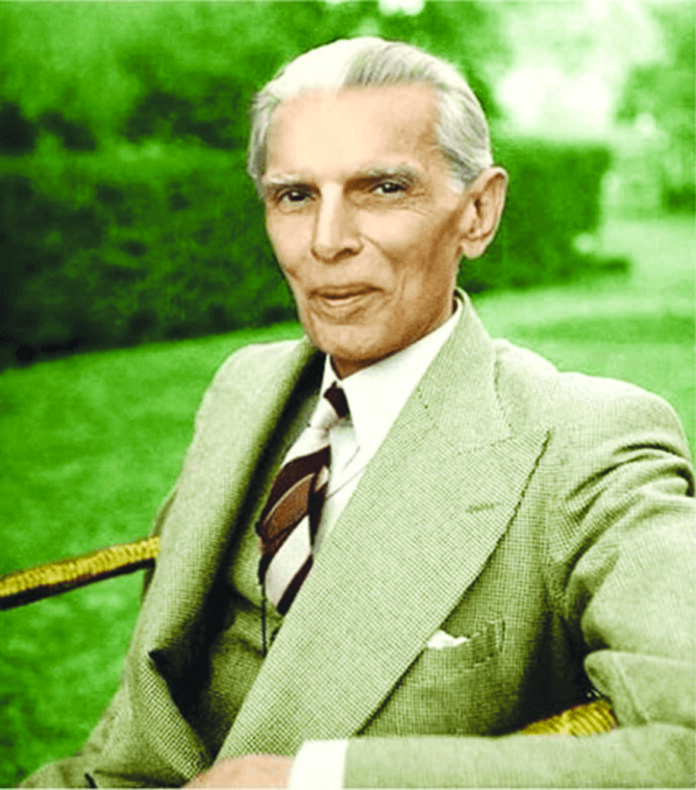On August 14, 1947 a new nation was carved out from the Indian Sub-continent, then a British Colony. Father of the Nation Quaid-e-Azam Muhammad Ali Jinnah wanted to start afresh, he refused to accept the last Viceroy Lord Mountbatten as the Governor General of the Commonwealth Dominion. Pundit’s had given six months to the new country as it was perceived to be unsustainable. First it was the Quaid who led from the front followed by the first Prime Minister, Liaquat Ali Khan.
It was on the invitation of the Quaid that prominent Muslim businessmen and scientists decided to settle in the new land. Unfortunately the Father of the Nation perished after a year of freedom in September 1948. The struggle for the creation of the republic continued.
The promotion to the rank of Sipah-e-Salar of an ordinary soldier with a very poor record of service was the first major blow to the democratic struggle. Finally in 1956 after the passage of the constitution, the Republic of Pakistan emerged with Iskander Mirza as its first President. Elections under the new constitution were scheduled for October 1958 but instead Martial Law was clamped and the constitutional framework annulled. It was the first open and planned effort for the re-colonization of Pakistan. The colonial judiciary and bureaucracy gladly joined the bandwagon, and only a few scattered pockets of resistance remained.
In the 1965 Presidential election held under the imposed 1962 constitution, Madar-e-Millat Mohtrama Fatima Jinnah challenged the ‘New Colonial Empire’. Despite massive rigging through the state apparatus she prevailed in the Eastern Wing and Karachi. She demanded restoration of the 1956 constitution under a parliamentary form of government. A mass media campaign was launched against her. She was declared a traitor and Indian agent. In Gujranwala the Sarkari League touts painted her name on stray dogs thus the term ‘Kutta and Kutti‘ entered the political arena.
What goes around comes around. After ten years of his ‘colonial rule’ the dictator decided to celebrate his ‘Decade of Progress’ in October 1968. Chants of ‘Kutta‘ were heard all over the country. We as students of the first born-free generation of Pakistan came to the streets demanding freedom. The labour unions also joined the protests. Ayub Khan was forced to resign in March 1969. Instead of following his own constitution he handed over power to the Sipah-e-Salar.
To the relief of the masses the 1962 imposed ‘Colonial Constitution’ was replaced with a Legal Framework Order (LFO). Elections were held on the basis of one-man one-vote in 1970. To the utter surprise of the establishment two major parties emerged. In the Eastern Wing it was the Awami League of Sheikh Mujib-ur-Rehman while in the Western Bhutto’s Pakistan People’s Party (PPP) won big. THE Rest is history, as they say.
The Islamic Republic of Pakistan and the Islamic Republic of Iran have commonalities. While IRP was the first Islamic Democracy, IRI was second. When Dr Muhammed Mossadegh, the elected PM of Iran decided to nationalize oil in his country, the PM of Pakistan was asked by the West to stop the takeover in the neighbouring Islamic Republic. On his refusal it was decided to get rid of both of them. The PM of Pakistan was assassinated in 1951 while the PM of Iran was captured soon after. Both republics collapsed, one came under the Raj while the other was handed back to the Shah. Iran succeeded in breaking the imperial shackles in 1979, the Shah fled the country never to return again. Now it’s the turn of Pakistan to shatter ‘colonization’ for all times to come.
Despite warnings from the field commander Lt Gen Sahibzada Yakub Ali Khan, the establishment decided on Military Action to crush the will of the masses. People’s power prevailed over state hegemony. The Quaid’s Pakistan was dismembered together with the collapse of the created ‘Colonial Empire’.
As a genuinely elected leader Bhutto moved fast to revive the Republic. First it was the 1972 interim constitution, followed by the 1973 unanimously agreed version. On 14 August 1973 the Islamic Republic of Pakistan emerged under an elected PM. He moved decisively against Colonization’. Pakistan, withdrew from the British Commonwealth of Nations, and banned the Freemason’s Movement. After completing the transition to constitutional democracy, he decided to call early elections in 1977.
Little did he know that he had been trapped by the forces of ‘Re-colonization’. Nationwide protests were already planned, conniving with with out-of-work politicians. Finally a new plan for re-colonization was launched on 5 July 1977 under the command of Gen Zia-ul-Haq, the Sipah-e-Salar. Bhutto was eliminated, his party under Benazir resisted but finally with Asif Zardari at the helm it too became a part of the ‘colonizing powers’.
Disdain for the constitution and rule of law is the first sign of colonial abuse. The state prefers to operate under the Imperial Acts like the Official Secre5ts Act 1923 and the Government of India Act 1935 while defying the constitutional framework enacted by the elected representatives of the people. For the information of our ‘Colonial Masters’; the bRight to Information Act 2017 has replaced the Official Secrects Act while the Constitution of the Republic overrides the Government of India Act 1935.
Imran Khan is right, violators should be punished. Arrest without warrants is punishable, so is physical torture in captivity. After the revolution in Iran, ‘Obeying Orders’ was not accepted as a viable defence. In the words of Imam Khomeni; “A civil servant is bound to obey only lawful orders”. Those who followed illegal orders to please the Shah were tried and punished. Iran will never be a monarchy again as all traces of human subjugation have been surgically removed. The Islamic Republic of Pakistan too needs such a ‘cleansing operation’.
The Islamic Republic of Pakistan and the Islamic Republic of Iran have commonalities. While IRP was the first Islamic Democracy, IRI was second. When Dr Muhammed Mossadegh, the elected PM of Iran decided to nationalize oil in his country, the PM of Pakistan was asked by the West to stop the takeover in the neighbouring Islamic Republic. On his refusal it was decided to get rid of both of them. The PM of Pakistan was assassinated in 1951 while the PM of Iran was captured soon after. Both republics collapsed, one came under the Raj while the other was handed back to the Shah. Iran succeeded in breaking the imperial shackles in 1979, the Shah fled the country never to return again. Now it’s the turn of Pakistan to shatter ‘colonization’ for all times to come.






















